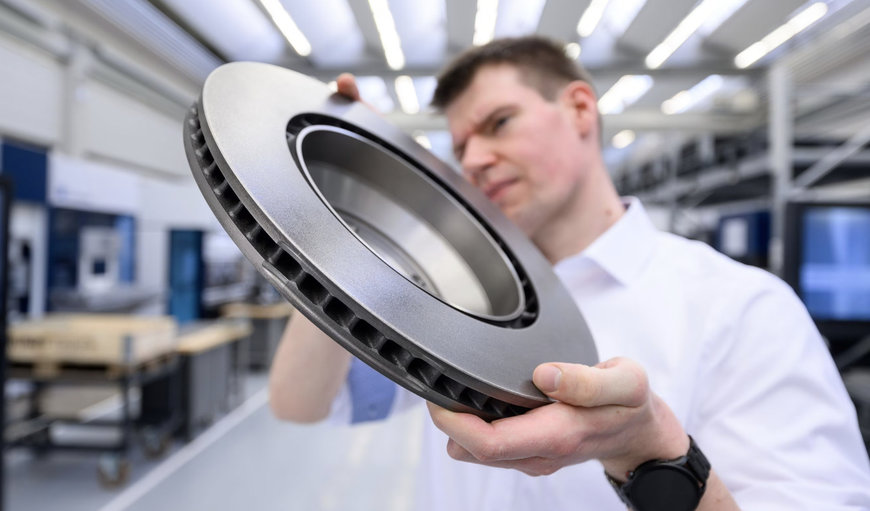www.auto-innovations.net
16
'23
Written on Modified on
Trumpf News
TRUMPF AVOIDING FINE DUST IN BRAKE DISCS
TRUMPF has brought a laser process to industrial maturity that helps reduce the abrasion of brake discs and thus fine dust emissions.

The high-tech company is already testing its use in series production with well-known automotive manufacturers and suppliers. "As a technologically leading laser system manufacturer, we have been working closely with the automotive industry for years and know the market very well. High-speed laser metal deposition is cost-effective, can be used in series production and thus offers the potential to become the new standard in brake disc manufacturing," says Richard Bannmüller, President and CEO TRUMPF Laser- and System Technology.
Laser process reduces particulate matter that is harmful to health
Even very low concentrations of particulate matter are harmful to health. About half of the particulate emissions in road traffic are due to wear on brakes, tires, clutches and the road surface, of which about half is brake dust. Brake discs coated by high-speed laser metal deposition emit far less particulate matter than conventional brake discs.
The laser process not only ensures less fine dust, but also less wear. The market potential is huge. In Germany alone, car manufacturers produce around 3.4 million cars every year. For the roughly 49 million cars already on the market in Germany, drivers have had to replace their brake discs several times up to now, often after just 50,000 kilometers, depending on driving style and wear. In the future, this could be necessary much less frequently.
Electric cars in particular benefit from new process
High-speed laser buildup welding also offers corrosion protection, which is particularly important for the brake discs of electric vehicles. These work primarily with recuperation (energy recovery), when braking, so the disc brake is rarely used to come to a stop. As a result, the brake discs accumulate flash rust more quickly, which leads to performance losses during braking and, in extreme cases, can necessitate premature replacement. "Our laser systems are already in use at numerous manufacturers of electric cars, helping to produce the battery, the e-motor or the high-performance electronics. With high-speed laser metal deposition for brake discs, we offer another manufacturing technology for the mobility of the future," says Bannmüller. He adds that the laser is the decisive tool for making e-cars possible in series production.
Efficient use of energy
The laser cladding principle works through a sophisticated interaction between laser and metal powder, making it possible to create pore- and crack-free layers. The key to the process is the powder and energy input. Instead of applying the metal powder to the component and then melting it there by laser light, in high-speed laser buildup welding it enters the laser beam already above the component. The light heats the powder to melting temperature already on its way to the component. This enables brake manufacturers to apply the coating much faster and use the energy employed much more efficiently to form the layer. The process has already received several awards, including the Berthold Leibinger Innovation Award.
www.trumpf.com

